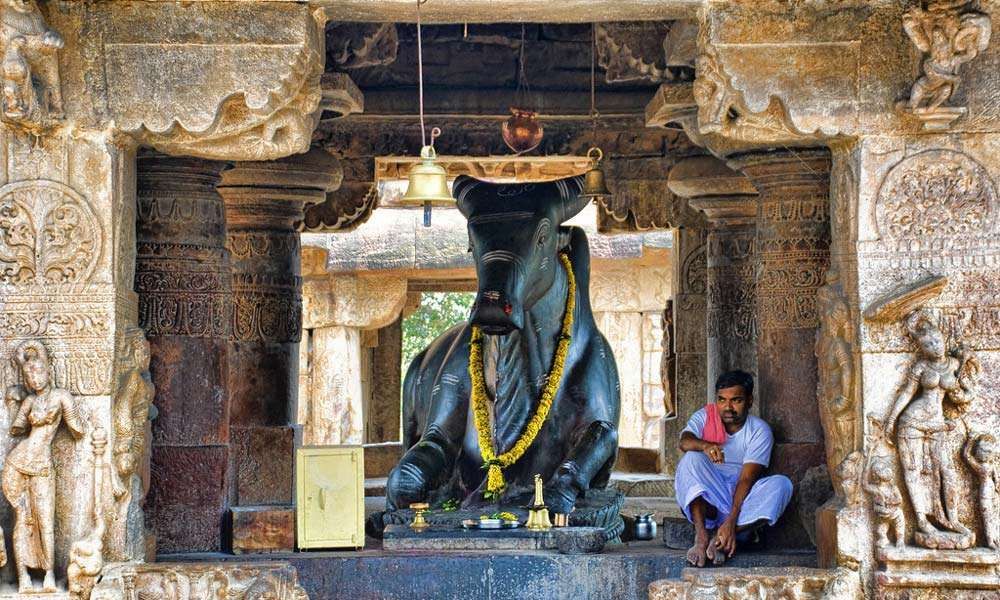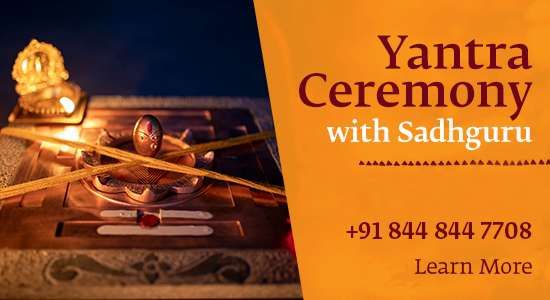Sadhguru on How Indian Temple Sculptures Are Made
Sadhguru looks at how the idols of deities were never created for visual appeal, but rather to sync with the cosmic geometry.

Q: Sadhguru, are traditional temple sculptures for aesthetics, or are they also performing a specific function like a yantra?
Sadhguru: If you look at these deities, they are not necessarily visually aesthetic. For example, Linga Bhairavi is not my idea of a beautiful woman – she is created that way in order to represent a certain dimension of the feminine.Two Dimensions of the Divine Feminine
There are basically two dimensions to the divine feminine. They are traditionally called Kali and Gowri – the Dark One and the Fair One. This is not a question of color. In Indian languages, the word raga means color, but it is also used to describe the flavor of something, not only color per se. In Indian classical music, the tune is called raga because it is a particular flavor of music. If you create a particular flavor, it will create a certain imagery and colors in your mind. That is why we use the word raga or color to describe a sound, a reverberation, an act, or an atmosphere, because we know that in your consciousness,it will create colors.
The forms of Devi that we find in temples are generally either Gowri or Kali – the Fair One or the Dark One. The darkness and fairness is neither in terms of skin color, nor in terms of good and evil. Darkness and fairness are seen as two different dimensions of existence – both are needed to make things happen in the world. Kali, the Dark One, is a fierce one. Gowri, the Fair One, is a mild one. Mild ones are usually worshipped as a companion for the main deity of the temple.
Subscribe
Where there is Shiva, there will be Gowri next to him. He is the main force – she is just there as an add-on, because she is a mild, civilized, domesticated woman. Kali is always alone, without a male form next to her. By herself, she is a complete force. In terms of geometry, Bhairavi is made up of three-and-a-half chakras. Because she is Kali, she is the lower half of the body – muladhara, swadhishthana, manipura, and one half of anahata. She only has half a heart – so do not expect her to love you! She is not capable of love, but she is capable of immense compassion and force.
Bhairavi is capable of enhancing your life in a tremendous way. I think that if something or someone enhances your life, it is a much bigger expression of love than the everyday “I love you” business. She will never “sweetify” you, but within a few days of contact, her energies can lift you higher than where you are right now, both experientially and in relation with the rest of the world. It can enhance your life hugely in terms of your competence, your mental and physical wellbeing, and your wellbeing in the world.
No Philosophy, Just Geometry
So, are these forms just aesthetic, cultural or philosophical? There is no philosophy behind this – this is the art of geometry. Unfortunately, because people are always looking for verbal meanings, someone comes up with a philosophical explanation, but Eastern arts have no philosophical background. Philosophy is something that is made up to support what you have done. Eastern arts are about trying to achieve symmetry with the geometry of existence.
Here, an artist is considered successful only when what he has created subjectively syncs with a particular existential form. This is the reason why an Eastern artist never leaves a name on his artwork – after all, at the most, he achieved an imitation. What he is proud of is a perfect imitation of some phenomenon in the universe by creating a small version of it that functions in the same way.
Indian art is not an imitation of nature in its physical form but in its fundamental skeletal geometry, in terms of how it is built within itself. In other words, it is about translating the energy geometry of a certain dimension of life into a physical form that in some way embodies this dimension so that people can experience it.
When it comes to the outside form, we do not care much about creating an aesthetically shaped arm or leg. It is not like every vein and every aspect of the arm has to be recreated in detail, because artwork in India is never really about visual appeal but about geometry. There has to be a geometrical pattern and perfection to it. What is important is the impact that the form has on you.
It is very difficult to achieve this geometric perfection in a stone form. A simpler way is to create a small metal yantra, usually made of copper or gold, and fix it somewhere in the chest, the pit of the throat, or the forehead of the deity. A metal form is used to compensate for whatever imperfections have happened in the stone form. This is how the deities were created – all of them are yantras.

Editor's note: The next Yantra Ceremony will be held at Isha Yoga Center. You will be initiated into a powerful process and receive the Yantra in Sadhguru's presence. For more details, click here or call 844 844 7708.


